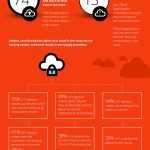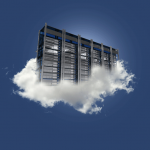Why you should think about the cloud like the electric grid
Why you should think about the cloud like the electric grid

A century ago, many large manufacturers in the U.S. were still powering their factories with in-house electricity generation. It may sound illogical now, but at the time it made sense.
Just as these manufacturers needed to be near a railway or major waterway to get raw materials in and products out, they also needed their own power generation on-site. This was because it was either too expensive to get electricity from the power grid to their factory, it was unreliable (particularly at scale) or it was simply unavailable where they were.
As the power grid became regionally available, electricity turned into more of a utility than a novelty, and companies began shutting down their on-site power plants because they could get commercial power at a competitive rate.
More importantly, creating power was not central to what these businesses did. It made sense to stop dedicating resources to power generation and instead free those resources up to focus on what their core business was.
Fast forward to the on-premises data center
There is a similar trend occurring today with the on-premises data center and cloud technology.
Just as it once made sense for manufacturers to produce electricity on-site, for years it’s made sense for companies to power their businesses themselves using on-prem servers in their own data centers. The considerations and dilemmas have been similar to those faced by manufacturers 100 years ago: cost, capability, and availability.
And just as on-site electricity generation took up a large amount of in-house resources for these manufacturers, building, staffing and maintaining on-prem data centers is resource-heavy and takes up a considerable chunk of a businesses’ operations. It’s also not relevant to the majority of these companies’ core business functions.
When businesses first began building their own data centers — in some cases more than 20 years ago — cloud providers were not yet in existence, particularly at scale. Much like the electric grid coming online, cloud providers have become increasingly available over the last 10-15 years, and leveraging them to manage and support business workloads is akin to powering down your on-site power plant and plugging into a utility company’s power source.
The resources that were being diverted to your on-prem data center will now be available to work on your core business, and you’ll have a stable, specialized and supported IT environment.
Not a one-for-one switch, but better
Even as their colleagues were making the switch to the power grid, there were certainly manufacturers in the past who questioned the business case for abandoning their own electricity generation and moving to a provider.
With power production in-house, they could control costs and reliability, or so they thought. Why put that in a third party’s hands? For many, the tipping point only came with competitive pricing provided by utility companies and the advancement of stronger, more reliable electric grids which drove reliability up and transmission costs down.
For today’s businesses, the concerns aren’t always that simple — cost and reliability are just the start. Security, for example, wasn’t a major inhibitor for someone moving to the electric grid. For many businesses considering a move to the cloud today, it’s the top concern.
But where history has shown us that a move to the electric grid was a no-brainer, moving your business to the cloud is actually more beneficial than keeping all that stuff in-house. 100 years ago, it was a one-for-one switch — manufacturers were more or less getting the same electricity they had been generating themselves when they switched over to the power grid.
Today, when businesses partners with a cloud provider, they instantly have access to more compute power and more resources than they had with their previous on-prem environment and they have the benefit of letting somebody else manage their data center, patch servers or handle the capex operation of making sure there’s enough compute power when it’s needed.
It’s not a one-for-one switch but an upgrade, especially when you consider the added capability of an increased workforce focused on core business goals as opposed to “energy creation” or in today’s case, “IT management.”
It’s not always “lift and shift” either
Today, it’s hard to argue against many compelling reasons to move to the cloud, just as there were many compelling reasons to outsource power generation many years ago. However, as many enterprises will tell you, it doesn’t always make sense to move everything to the cloud, and a business’ shift usually won’t happen all at once. This is where the parallels start to diverge — moving over to a cloud environment isn’t as easy as flipping off one switch and turning on another.
Businesses, especially larger legacy businesses, will likely have a combination of clouds and dedicated gear, or a hybrid cloud, and some may even have clouds from multiple vendors or a multi-cloud. This is another reason why it’s important to partner with a managed service provider, preferably one with experience and expertise across multiple clouds, to help you customize an environment that fits your business needs.

Jeff DeVerter, CTO, Microsoft Technologies at Rackspace Managed Hosting
Despite the benefits, skeptics remain
Regardless of all of the benefits that a business can derive from moving some, most, or all of their applications and operations to a managed cloud environment, I still see business leaders holding back.
Some of the biggest reasons I hear from CIOs and other decision makers are that they “know their servers better than anyone else,” and they have trouble trusting a third party to do what they do. Another big sticking point is cost, as some IT environments are seemingly not economical to operate on a utility basis.
To borrow from the above analogy one final time, would you trust yourself to install all your needed electrical wiring? Probably not, and there are inherent benefits that come with offloading complicated and critical tasks to a certified service provider.
With regards to security, recent data shows companies are actually safer in the cloud. Think of it this way — is your data center more secure on-prem when a hyperscale cloud provider like Rackspace typically spends more on security than your business makes in a year?
And with regards to cost, have you really crunched the numbers around staffing and retaining the talent needed to maintain an on-prem data center? What about growing that data center with new technologies and engineers and architects who are able to use them?
The managed cloud difference
Many of the concerns that come up during a business’ journey to the cloud can be mitigated by working with a managed cloud provider.
Why go it alone when you can leverage the experience and expertise of a partner who’s been there before? For many businesses, it’s been as clear a choice as it was 100 years ago when manufacturers shut down their in-house electricity generation and moved to the electric grid.
The author is CTO for Microsoft Technologies at Rackspace Managed Hosting.
The post Why you should think about the cloud like the electric grid appeared first on ReadWrite.
(39)














